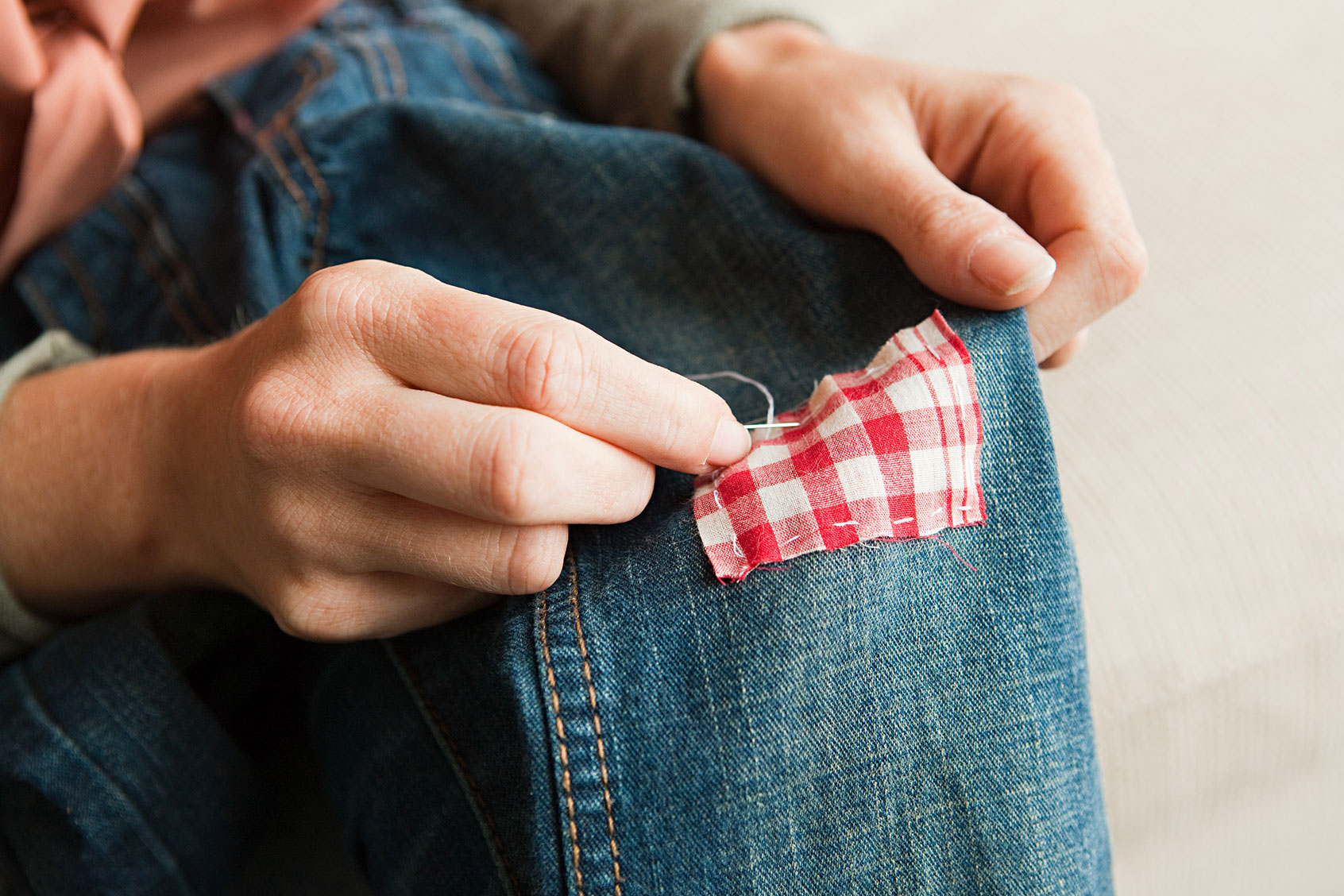Mending clothing is a smart way to make your wardrobe last longer, which can save money as well as keep clothing out of landfills.
“Your clothes don't have to be fancy or expensive to be 'worth' care and repair,” said Abby Seethoff, a Brooklyn-based writer who also offers clothing mending services.
You might think only high-end, well-constructed or expensive items can be salvaged, but Seethoff pointed out that mending “can slow down the disintegration of even a cheaply made shirt.”
“I have a Forever 21 shirt that I've had since high school,” said Seethoff, 30. “It has not fallen apart.” Instead of tossing the shirt when small holes tear through the old fabric, she fixes them — often with a technique called visible mending, which embellishes the garment rather than blending in.
“Some of my favorite socks are socks that are at this point more darn than sock,” she said, “and I think they look so beautiful.”
Seethoff started mending during grad school, when she learned how to darn socks through a YouTube video.
“And I kid you not, my life changed,” she said. “I realized that darning is a technique that you can use on all kinds of things, not just socks.”
Darning — distinct from techniques such as sewing, knitting or embroidery — is a particular method of weaving strands of thread that creates a kind of built-in patch to cover a hole. Many people find it easier to learn than sewing, and it’s simple to start because it doesn’t require a machine. It can also be inexpensive; Seethoff recommends starting with embroidery floss, which is thicker and less expensive than many threads.
After the first few mends, Seethoff said, “I just got obsessed with fixing things. I fixed a bunch of my socks. I fixed my roommate’s socks. I fixed my friends’ socks. I fixed my then-partner’s socks. At one point, almost every sock he had I had worked on.”
Even cheaply made clothes can become some of your favorite items after you’ve contributed sweat equity to them.
“Caring for your clothes makes you love them more,” said Michelle Spencer, who DIYs her own clothing repairs.
We need your help to stay independent
Spencer said it’s worth giving mending a try if you’ve never done it before. “Take your time and have a go.”
Both Spencer and Seethoff said replacing buttons and altering hems are good first projects. YouTube is the go-to for self-taught stitchers, and they both stressed: You’ll get better with practice. You might not love your earliest mends; that’s why Seethoff recommended starting with socks, which are “low stakes.” As your skills improve, you’ll also be able to make clothes last longer and longer with repairs.
A few more tips they shared for new menders:
- The thicker the thread, the less work you’ll have to do. Darn with a thick material like embroidery floss or a wider yarn (for sweaters) to save yourself time.
- Look for tools that make stitching more accessible, especially if the repetitive motion or fine pinching hurt your hands. Thimbles, pliers and other tools do some of the work for you and ease the pain.
- Don’t give up on garments that are no longer wearable. You can recycle the material to use for patches on other items or for other projects — Seethoff gives her seemingly unusable fabric one last life as cat toys.
- Steer away from tailors for mends; they’re better for alterations. If you have items with financial or sentimental value that require complicated mending, find a professional who specializes in whatever the item needs, like fine beadwork or leatherwork.
If you absolutely don’t want to learn how to darn or sew, try iron-on or glue-on patches to cover holes. One of Spencer’s first mends was attaching iron-on ladybird motifs over holes in the elbows of a red sweater.
“Hardly anyone noticed, but those who did thought it was fun,” she said.
Or, just use scissors to give inexpensive clothing a new life. That’s how Bree Tiura turns boring unisex T-shirts into pseudo-tailored pieces that fit her body.
“I thought for a long time that I should stay away from them altogether, but then I started customizing them,” said Tiura. She calls the technique “scissor sewing.”
By cutting around the neck and hems, she turns boxy T-shirts and tank tops into custom-fit scoop-necks and crop tops better suited for her body, which she identifies as petite.
“It definitely makes shopping more affordable,” she said. “Women’s T-shirts are often more expensive, so I’m glad I’ve found a way to customize [cheaper unisex] T-shirts.”
Scissor sewing leaves your clothes with a less polished look than sewing would, but it’s a simple, quick and nearly free way to update clothes you might otherwise be ready to toss.

